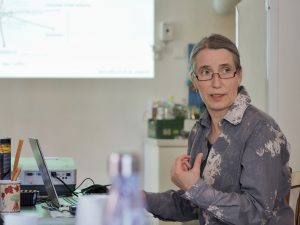Home – English

Our two main research areas are:
1. functional morphology
2. wetland ecology
(1) We study the architectural constraints of plant growth and their consequences on plant ecology. We focus on clonal and bud bank traits, their relation to plant distribution and response to disturbance and productivity. We aim to quantification of belowground coarse organs (storage roots, rhizomes, tubers and bulbs) and their effect on ecosystem functions. Our methods span from comparative anatomy, morphology, through ecophysiology to experimental ecology .
We have been developing standards for clonal and bud bank traits assessment. and Data on clonal and bud bank traits of Central European species collected by members of department during last more than 20 years are stored in the online freely available database CLO-PLA. We are expanding the CLO-PLA database to other ecosystems and continents. We organize an annual course “Go Belowground” for PhD students where we teach the methods for studying belowground plant organs.
(2) We study wetlands of Trebon basin in relation to land use and its history; we are interested also about ecophysiology of wetland plants especially carnivorous plants and sphagnum mosses

